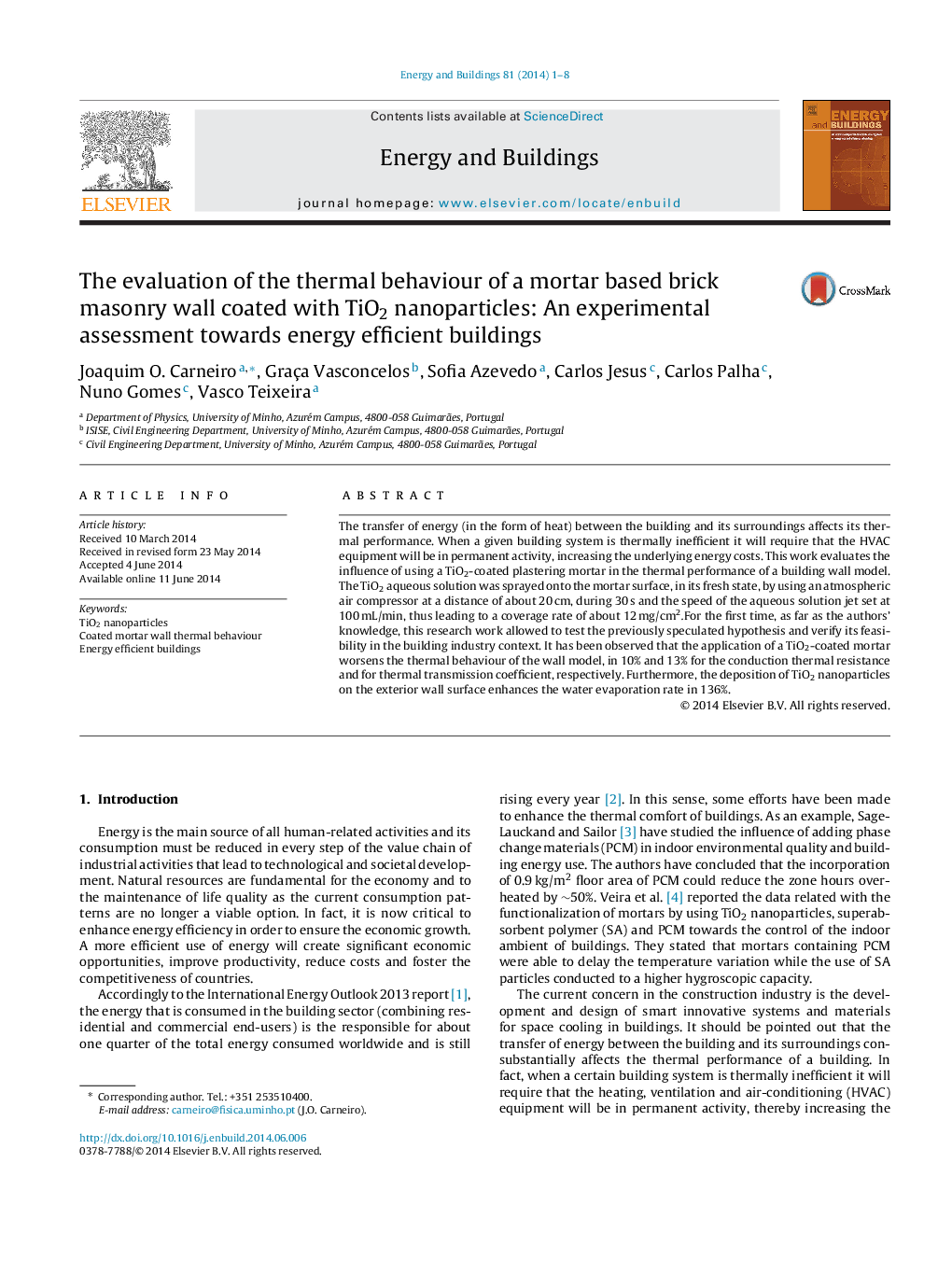| Article ID | Journal | Published Year | Pages | File Type |
|---|---|---|---|---|
| 262810 | Energy and Buildings | 2014 | 8 Pages |
•The influence of TiO2-coated plastering mortar on the thermal performance of a building wall model.•The thermal behaviour of the wall models was analyzed transient condition (due to water spraying).•The deposition of TiO2 nanoparticles on the surface enhances the water evaporation rate in 136%.
The transfer of energy (in the form of heat) between the building and its surroundings affects its thermal performance. When a given building system is thermally inefficient it will require that the HVAC equipment will be in permanent activity, increasing the underlying energy costs. This work evaluates the influence of using a TiO2-coated plastering mortar in the thermal performance of a building wall model. The TiO2 aqueous solution was sprayed onto the mortar surface, in its fresh state, by using an atmospheric air compressor at a distance of about 20 cm, during 30 s and the speed of the aqueous solution jet set at 100 mL/min, thus leading to a coverage rate of about 12 mg/cm2.For the first time, as far as the authors’ knowledge, this research work allowed to test the previously speculated hypothesis and verify its feasibility in the building industry context. It has been observed that the application of a TiO2-coated mortar worsens the thermal behaviour of the wall model, in 10% and 13% for the conduction thermal resistance and for thermal transmission coefficient, respectively. Furthermore, the deposition of TiO2 nanoparticles on the exterior wall surface enhances the water evaporation rate in 136%.
